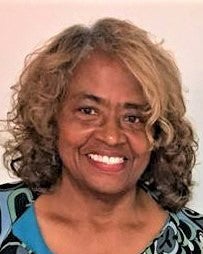Washington’s role on the Underground Railroad
Published 4:55 pm Monday, March 20, 2023
|
Getting your Trinity Audio player ready...
|
Two years ago, Milt and I, along with his cousins Emma and Sarah, were blessed to attend the unveiling of the Harriet Tubman statue exhibit in Halifax, NC. This historic event was sponsored by the Halifax Underground Railroad Organization. It was the first time the statue was presented in North Carolina during a nationwide tour. The event was truly beautiful and powerful. The nationally celebrated and award-winning sculptor, Wesley Wofford of Asheville NC, created a stunning tribute to Tubman. He explained how the statue became a symbol to him, not only about the underground railroad (which is often called the nation’s first Civil Rights movement,) but a symbol of healing for our country after the death of George Floyd. Wofford hoped the statue will continue to inspire unity and working towards a common good for all people.
It was significant that the unveiling to honor this courageous woman was held at a very significant underground railroad site. Harriet Tubman embodies the belief, mission and strength of the Underground Railroad. It was a network of people helping people. All kinds of people, Black, White, Native American, immigrants, anyone who understood that no one should be enslaved worked to make freedom possible in any way they could. The underground railroad mission was humanity at its best, at a time when humanity was not at its best. The mission of the Washington Waterfront Underground Railroad Museum is to showcase the genius enslaved people used to get to their freedom, and to also showcase the inclusion of all people whose compassion, grace and dignity exemplifies the best of mankind.
One historian at the event talked about the 20 National Park Service Underground Railroad Network to Freedom sites that North Carolina has. Washington has two. In 2014, working with the Phoenix Historical Society in Tarboro NC, I was able to get the Pamlico-Tar River designated as a National Park Service Underground Network to Freedom site. The river is also named as a North Carolina Freedom Road site. Freedom Roads are rivers, creeks, streams or any water route that freedom seekers used to escape via canoe, boat or ship. I was able to get the Washington Waterfront Underground Railroad Museum designated as a National Park Service Underground Railroad Freedom Site Facility in 2017.
Many people were at the event and as I was standing observing the crowd, I overheard someone say, “you know, Little Washington got it right. They have an underground railroad museum there. It’s the only one in North Carolina that is devoted solely to telling the story of the underground railroad. The people at the museum tell how Washington got together and helped enslaved people. And how smart enslaved people were to be able to orchestrate their own freedom seeking attempts. I read about it the Our State Magazine, but I’m going when it gets warmer.”
That really blessed me to hear someone I’ve never met or visited the museum talk about the mission of our museum. And yes, we are the only Underground Railroad Museum in North Carolina.
The museum does indeed highlight and celebrates the achievements made by all kinds of people living here to make life better for the enslaved and others. The museum is a testimony of what people can do in the most adverse of times.
We have had visitors from all fifty states and from 43 countries. We’ve hosted thousands of visitors who’ve ranged from Foreign Ambassadors, to vising professors from other countries, authors, scholars, celebrities, movie producers, preschoolers to college students, senior citizen groups, church groups and so many others. I love sharing why the museum and our town is so special and how it has earned its place in history with its role in the underground railroad. North Carolina, even before the underground railroad became prominently noted was known as the ‘The Runaway State.’ This was because North Carolina’s Atlantic Ocean coastline and waterways offered many opportunities for freedom seekers to use waterways to gain freedom. The Great Dismal Swamp in North Carolina near the Virginia border was a well-known haven for freedom seeking, and the town of Winton (Hertford County) NC, 60 miles from Washington was a huge headquarters for Quaker Abolitionist activity.
I hope that you will come and visit the museum. Slavery is a difficult story to tell but there is another side most people aren’t aware of. It’s the celebration of the human spirit to overcome adversity, and, the genius, faith and creativity of the enslaved people to self-emancipate and or secure their own freedom. We want to show you also the some of the ways people in this town offered hope and help. Please come check us out.
Leesa Jones is a Washington native and the Co-Founder/Curator of the Washington Waterfront Underground Railroad Museum.





